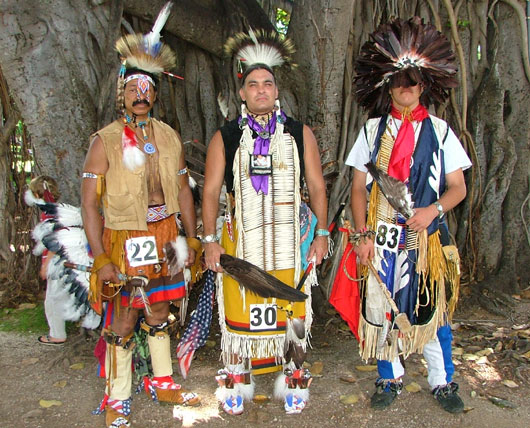|
|
|
|
How
Two Ancient Cultures Co-exist IN MODERN OAHU
By: Mary Young
Oahu Island News
It
was a bright May morning in 1963. White Crow, a visitor from the mainland, was
driving around Oahu with a friend, listening to music on the car’s new
four-track tape deck. Traveling along the coast, they drove by Koko Head and
then Sandy Beach, following the road as it curves inland.
White
Crow recalled the William Tell Overture was playing as they crested a hill when
the Koolau Mountains came into view.
“I
had never in my life seen mountains like those,” he reflected. “The Koolaus,
Rabbit Island down there, the beautiful ocean and all that – it was at that
moment I knew that this was where I would live.”
A
tall, slender man with thick white hair, White Crow is almost 70 now. Today he
lives in Moiliili, having retired from his management job in California and
moved here in 1991. White Crow is an American Indian of the Onondaga tribe, one
of six tribes of the Iroquois Nation. Long ago, he spent his boyhood near his
tribal lands in the thick, remote woods of upstate New York.
White
Crow is only one of an estimated 5,000 American Indians who presently reside in
Hawaii, more than an ocean away from their ancestral homelands.
“Some
natives that come here to Hawaii, they get homesick, and they actually go back
home,” White Crow said.
Those
who stay find a variety of ways to maintain their cultural ties. Many American
Indians here, especially those who are active duty and retired military, meet
regularly in small groups known as circles, said Kalliata Velez-Axe, a Cherokee
who counsels Indians in the military on behalf of the Council of the Warrior
Circle of the Veteran’s Association. Circles can be spiritual or political,
she noted.
“It’s
a group of people who want to get together to remember the way they were taught
and the way of life we’ve lost.”
Just
like the native peoples of Hawaii, American Indians have a strong connection to
their homeland that existed well before their contact with European explorers,
said Jodi Byrd of Chickasaw descent and a professor of indigenous politics at
UH-Manoa.
“Our
relationship to the land is something that was created through travel, through
that promise, through having the lands that we were supposed to be on,” Byrd
said.
Velez-Axe
said native Americans and native Hawaiians have similarities in their legends,
too, as well as their dance traditions.
“If
you look at the dolphin, as an example, the dolphin is like a sea wolf. The
shark compares to a grizzly bear. There are a lot of legends that are almost the
same,” she said. “A lot of Hawaiians believe in what is around them very
strongly. In mother earth, the life that she gives, the love that she gives.”

Dancing
is a touchstone for both native cultures. On Oahu, annual pow-wows—gatherings
of members of various tribes – are presented each year by the Intertribal
Council of Hawaii and the American Pow-Wow Association. While not all tribes
have a pow-wow tradition, the gatherings are open to all Indians as well as to
the public. Inter-tribal singing, drumming, and dancing are used to both
literally and symbolically bring the tribes together. Crafts and traditional
foods are also featured.
Pow-wows
here start with a Hawaiian blessing and hula performance. “This is their land,
and we respect this and we honor the Hawaiian people,” said Velez-Axe. “We
ask our cousins, the Hawaiian people, to come and be honored.”
David
Bevett, a Shawnee/Cherokee Indian who danced in the 30th Annual Intertribal Pow-wow
last month, also sees a connection in the dance traditions of Hawaiian and
Indian cultures.
A
woman at the pow-wow approached him after watching him dance. “She said, ‘I
am a native Hawaiian, and there is something in you when you are dancing. You
touch me inside,’” Bevett said. “That’s a very high compliment. It was
the similarity about the dancing, being able to pick up something from the
dancing.”
Bevett
is employed as a clinical psychologist for the Hawaii Department of Education.
“I’ve gone out to Waianae a little bit, and I realized that most of the
folks we work with out there are Hawaiians,” he noted. “And when some
Hawaiians see my necklace they give me kind of an extra smile and the ‘hang
loose’ thing.”
Is
it difficult being so far from home?
Prof.
Byrd says she keeps close contact with family and friends on the mainland,
returning home to Oklahoma for dances, sharing the stories her grandparents told
her. White Crow does loom beading, a traditional craft, and observes the
seasonal festivals that are important in his culture.
“You
don’t need a whole group to do it,” he said.
Most
of the people interviewed for this story talk about the multiculturalism of
Hawaii and feeling accepted here.
Bevett,
who grew up in the inner city of Newark, N.J., said, “This is a really cool
place - it’s more home to me, more even than New Jersey for sure.”
Byrd,
whose Chickasaw ancestors are buried in Mississippi and Tennessee, said she will
return to be with them someday.
“Even
though I’m here in Hawaii, I always know where my home is, and I always know
where I want to be and where I want to end up,” she mused.
White
Crow has no plans to return to his homeland.
“It’s all one earth,” he said. “Being Indian is not just being your physical self. It is a state of mind.”